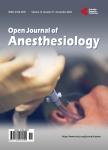Obstetric Anesthesia Practice Significantly Evolved: A Field for Cesarean Delivery Parturient for the Provision of Safe Anesthesia in Urgent Circumstances
Obstetric Anesthesia Practice Significantly Evolved: A Field for Cesarean Delivery Parturient for the Provision of Safe Anesthesia in Urgent Circumstances作者机构:Department of Anesthesia and Resuscitation Hospital ZNA Middelheim Antwerpen Belgium European Society of Anaesthesiology and Intensive Care Ghent Belgium Anesthesia and Resuscitation Services Mohammed VI University of Sciences and Health-UM6SS Casablanca Morocco Cardiologist Vascular Surgery Mohammed VI University of Sciences and Health-UM6SS Casablanca Morocco Faculty of Science and Technology Hassan II University of Casablanca Casablanca Morocco Departement of Services Cardiology Mohammed VI University of Sciences and Health-UM6SS Casablanca Morocco Department of Anesthesia and Resuscitation Mohammed VI University of Sciences and Health-UM6SS Casablanca Morocco Obstetrics and Gynecology Services Mohammed VI University of Sciences and Health-UM6SS Casablanca Morocco
出 版 物:《Open Journal of Anesthesiology》 (麻醉学期刊(英文))
年 卷 期:2024年第14卷第3期
页 面:66-92页
学科分类:1002[医学-临床医学] 100210[医学-外科学(含:普外、骨外、泌尿外、胸心外、神外、整形、烧伤、野战外)] 10[医学]
主 题:General Anesthesia Cesarean Delivery Intubation Maternal Refusal Obstetric Anesthetists
摘 要:General anesthesia and Obstetric Anesthesia is the gold standard for a cesarean section but there are some cases where general anesthesia is unavoidable. The use of general anesthesia for cesarean delivery has decreased in recent years due to the widespread use of neuraxial techniques. The choice of anesthesia techniques for cesarean delivery depends on several factors, including the patient’s psychology and the attending physician’s experience. It is chosen because of its safety profile and its benefits to the mother and fetus. It may be indicated due to emergency, maternal refusal of regional techniques, or regional contraindications. Major complications include failed intubation, gastric content aspiration, and increased bleeding risk. This study aims to evaluate the impact of a newly launched team on obstetric anesthesia practice.



